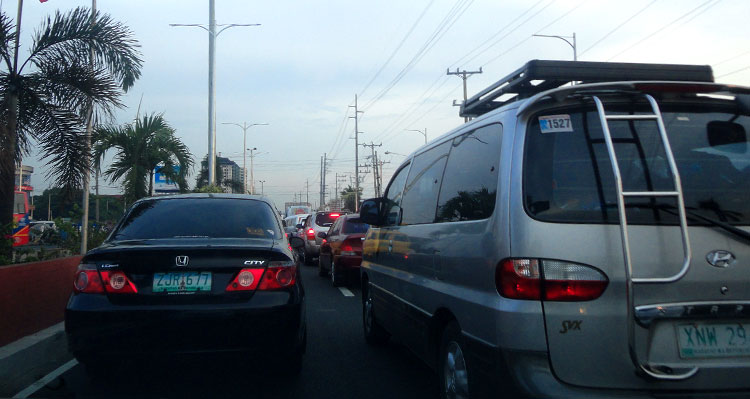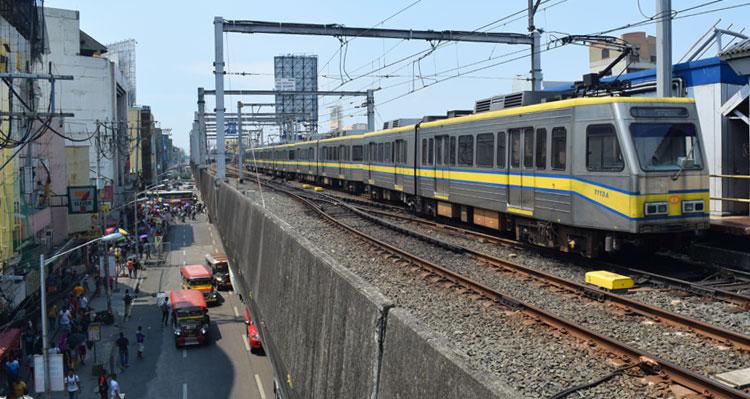
Stuck in heavy traffic in Metro Manila. Photo by FAQ.ph
The heavy traffic in Metro Manila is not only caused by the lack of roads or the congestion of buses in the National Capital Region. The stressful traffic jams are also due to many other factors, such as the overpopulation of residents, congestion of private vehicles, inefficient services of rail transportation, and the ineffective traffic control management in the country’s capital region.
Furthermore, the effects of Metro Manila’s traffic is not only limited to the delays suffered by the riding public but traffic congestion can also cause air pollution, noise pollution, vehicular accidents, and an unhealthy economy in the region and even in the national level.
Whether you’re residing in Metro Manila or just a concerned Filipino citizen, here are 10 alarming facts that are related to the heavy traffic in the region that you should know:
1. In 2013, the Land Transportation Office (LTO) listed a total of 2,101,148 motor vehicles registered in NCR or 27% of the country’s 7,690,038 total registered motor vehicles. In 2015, the total motor vehicles in Metro Manila has already peaked at 2.5 million. Source: The Standard
2. Metro Manila has only 1,032 kilometers of roads or 3.5% of the total 39,370 kilometers of roads nationwide. The National Capital Region has only one kilometer of road per 424 vehicles. Source: The Standard

EDSA Road in Pasay City. Photo by FAQ.ph
3. The traffic demand in Metro Manila is at 12.8 million trips. 69% of these total trips are done using public transport yet only 22% of the road space is occupied by public vehicles. The other 78% of road space is taken by private vehicles. Source: National Economic and Development Authority
4. A study by the National Center for Transportation Studies says that the heavy traffic in Metro Manila cost the country 137.5 billion pesos in 2011. Source: Rappler

Stuck in a heavy traffic in Metro Manila. Photo by FAQ.ph
5. The total population of Metro Manila as of 2010 is already at 11,855,975 which is almost 12% of the total population of the Philippines. The total land area of Metro Manila (638 square kilometers) is only 0.21% of the total land area of the Philippines (300,000 square kilometers). Source: Philippine Census

Metro Manila Skyview. Photo by FAQ.ph
6. Manila, Pateros and Caloocan are the top 3 most densely populated cities in the world. Manila has a population density of 42,857 people living per square kilometer. Source: Wikipedia
7. As of 2010, the number of informal settler families in Metro Manila is already more than half a million. This number is already 20% of the total number of household in Metro Manila. 41% of these informal settlers are located in government owned lands while 34% are in privately owned lands. Source:National Economic and Development Authority

Squatters area in Manila. Photo by Bindue via Pixabay
8. 20% of the total income of the poor in Metro Manila is spent on transportation. This percentage is more than what they spend for rice (15% ), utilities (6.97% ), health (2.99% ), clothing (2.96% ) and education (3.37% ). Source: The Standard
9. 85% of air pollution in Metro Manila comes from vehicles. Source: GMA Network

Metro Manila Air Pollution. Photo by FAQ.ph
10. According to a COA report, a P1.314-billion allocation from the Disbursement Acceleration Program for the rehabilitation of Light Rail Transit 1 and 2 was released in full by the Aquino’s administration in January 2014. However, the rehabilitation projects have not yet been implemented due to several project revisions. In the same month, the MMDA has launched a new traffic signalling system worth P290 million. Source: The Standard, Manila Times

Light Rail Transit Line 1 (LRT 1) in Monumento Station. Photo by FAQ.ph
Have you reached any conclusion about the facts or statistics listed above? Feel free to make a comment below. Sharing knowledge is also great. So please share this post to your friends. 🙂
About Rig Man
Rig Man is a Filipino nationalist. He loves to travel through space and time – through astronomy, history and geology.
Photo no.3 is not EDSA. SLEX on the Left, SKYWAY in the Middle and Service Rd on the Right.
Hi. Thanks for the comment. Can you confirm/show some proof for the information so we can make the necessary correction? We thought that EDSA extends to Pasay till the Bay City reclamation area.
There are no toll gates at EDSA…
It’s EDSA all right. SKYWAY in the middle? Looks like the MRT to me.
Ok Guys. That’s right, whether it’s EDSA or not, it’s still Metro Manila. Perhaps we can now go back to the point. The alarming stats of traffic congestion in Manila. 🙂
Yes you’re correct, that’s not EDSA. So you get a star. Here you go. ☆
Now let’s get back to the point of this article, which is the inadequate infrastructure and lack of urban planning that’s choking the Metro.
Its more like inadequate knowledge of Metro Manila thats causing the traffic congestion. Why is it that majority of those caught in those traffic are still using the same route everyday knowing its current situation? Metro Manila has a lot of alternate route for you to traverse from point A to Point B. Its always easy to pointout the lack of urban planning, etc and yet we seldom see ourselves planning our travel to/from the Metropolis. We cant expect govt. to provide solution for everything.
Its time to divert the Corporate Businesses to the Province. and some Government Central Offices move outside Metro-Manila, New Factories and new Businesses most start in the Province. For Example in big Cities in Samar and Leyte.
Yes relocate the RP capital/Presidential Palace in Samar Is. and all diplomatic quarters. Set up new Industrial sites in R8. Build fast trains system coming from Luson, West Visayas, and Mindanao with central terminal located in R8.
Why not Bicol Region instead of Leyte?
The traffic in Metro Manila will surely drive you nuts. As a certified commuter, I find this very tiring without even arriving at the workplace yet. Traffic jam is my favourite rant topic and here are some tips on how to survive this malady http://boredlass.blogspot.com/2015/12/priceless-tips-on-how-to-survive-metro.html